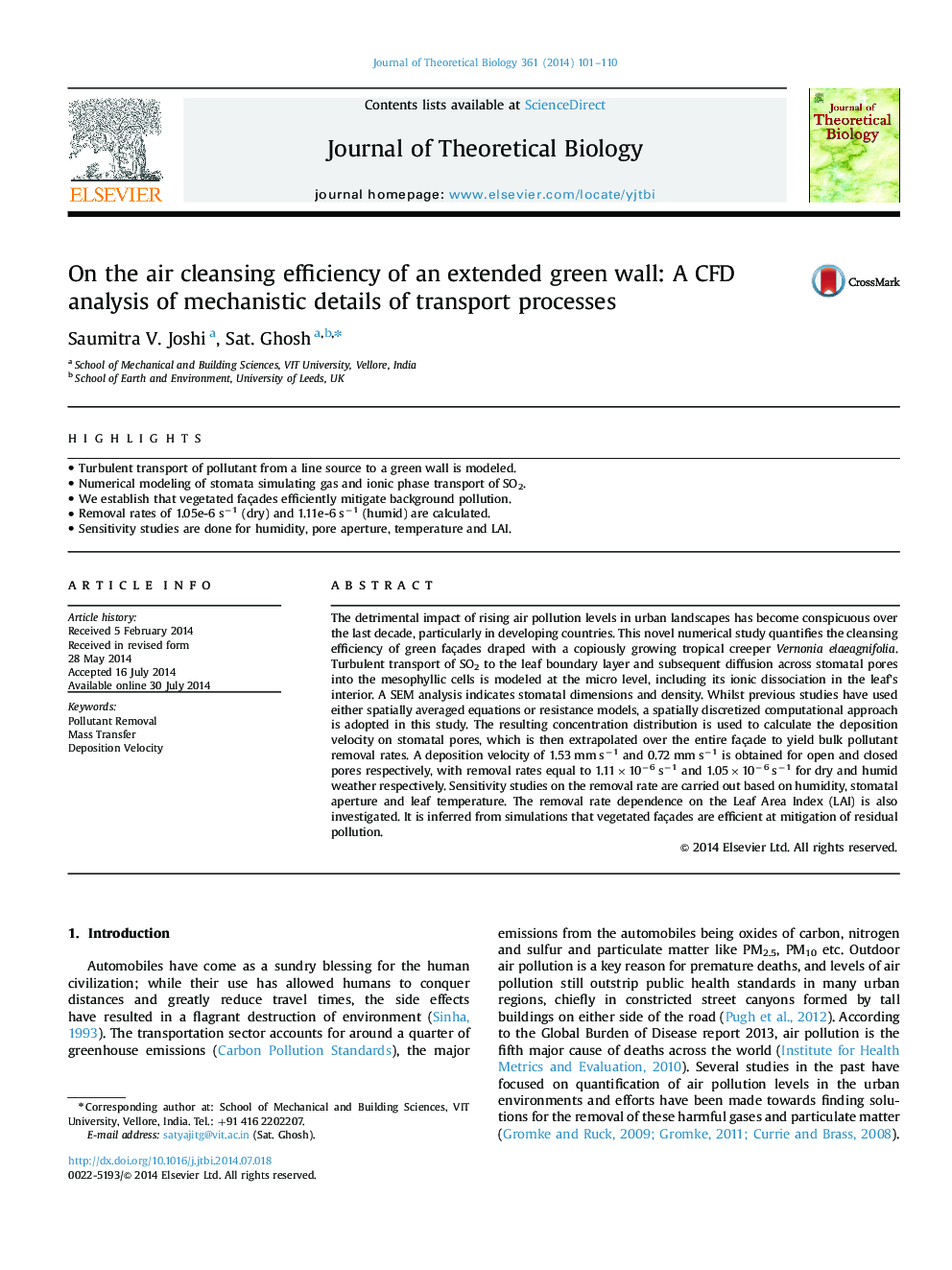| Article ID | Journal | Published Year | Pages | File Type |
|---|---|---|---|---|
| 4496136 | Journal of Theoretical Biology | 2014 | 10 Pages |
•Turbulent transport of pollutant from a line source to a green wall is modeled.•Numerical modeling of stomata simulating gas and ionic phase transport of SO2.•We establish that vegetated façades efficiently mitigate background pollution.•Removal rates of 1.05e-6 s−1 (dry) and 1.11e-6 s−1 (humid) are calculated.•Sensitivity studies are done for humidity, pore aperture, temperature and LAI.
The detrimental impact of rising air pollution levels in urban landscapes has become conspicuous over the last decade, particularly in developing countries. This novel numerical study quantifies the cleansing efficiency of green façades draped with a copiously growing tropical creeper Vernonia elaeagnifolia. Turbulent transport of SO2 to the leaf boundary layer and subsequent diffusion across stomatal pores into the mesophyllic cells is modeled at the micro level, including its ionic dissociation in the leaf׳s interior. A SEM analysis indicates stomatal dimensions and density. Whilst previous studies have used either spatially averaged equations or resistance models, a spatially discretized computational approach is adopted in this study. The resulting concentration distribution is used to calculate the deposition velocity on stomatal pores, which is then extrapolated over the entire façade to yield bulk pollutant removal rates. A deposition velocity of 1.53 mm s−1 and 0.72 mm s−1 is obtained for open and closed pores respectively, with removal rates equal to 1.11×10−6 s−1 and 1.05×10−6 s−1 for dry and humid weather respectively. Sensitivity studies on the removal rate are carried out based on humidity, stomatal aperture and leaf temperature. The removal rate dependence on the Leaf Area Index (LAI) is also investigated. It is inferred from simulations that vegetated façades are efficient at mitigation of residual pollution.
